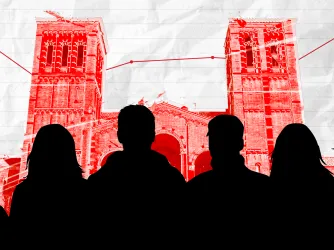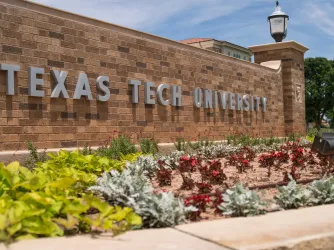Table of Contents
Speech Code Countdown: Most of America’s ‘Best Colleges’ Restrict Speech

U.S. News & World Report recently released its annual rankings of the “Best Colleges” for 2017. The rankings are based on a multitude of “indicators of academic excellence” that prospective students use to narrow down their college application lists, including graduation and retention rate, financial resources, the institution’s reputation, and student selectivity. But U.S. News’ ranking system fails aspiring students by overlooking one of the most important factors students should consider when choosing a college or university: whether the institution is committed to free speech.
FIRE has revisited these rankings to answer that very question. And over the next few days, we’ll be counting down U.S. News’ top 25 schools, and revealing our own analysis of just how well America’s “Best Colleges” do when it comes to protecting free speech on campus.
As FIRE readers know, many of these top institutions make commitments to academic freedom and free expression, yet place at least some limits on constitutionally protected speech through restrictive policies—what we call “speech codes.” On public campuses, the First Amendment requires administrators to respect the speech rights of students and faculty. FIRE contends that private institutions that promise freedom of speech on campus are both morally and contractually bound to keep those promises as well. It’s our job to hold these institutions to their moral and legal obligations.
Every year, FIRE evaluates speech codes at more than 400 colleges and universities throughout the United States. Our Spotlight database ranks schools using a traffic light-inspired system and provides detailed information about how they fare when it comes to protecting—or failing to protect—free speech. A “red light” institution has at least one policy that both clearly and substantially restricts freedom of speech. A “yellow light” institution is one whose policies restrict a more limited amount of protected expression or, by virtue of their vague wording, could too easily be used to restrict protected expression. FIRE’s highest, “green light” rating goes to institutions with policies that do not seriously imperil speech.
Our fresh look at U.S. News & World Report’s top-ranked colleges and universities provides information on these schools’ policies from our Spotlight database and incorporates other headline-making free speech news that applicants should know about before they apply.
Let’s start the countdown:
24. University of Virginia (Tie)
Actually the 26th school on U.S. News’ list (due to a three-way tie for number 24), the University of Virginia (UVA) earns one of FIRE’s rare, green light ratings for its speech-friendly policies. Students looking for a campus free of restrictive speech codes will find it at UVA.
24. University of California, Los Angeles (Tie)
FIRE has expressed concerns about the University of California System’s proposals to implement a “Statement of Principles Against Intolerance.” If formally adopted, such a policy could imperil the UC System’s ability to function as a research institution if students or faculty remained constantly under the spectre of punishment for expressing views subjectively perceived as intolerant.
In that vein, the University of California, Los Angeles (UCLA) earns a yellow light for, among other policies, its Bias Reporting Policy, which makes both “hate speech” and “disparag[ing]” speech punishable offenses. Because UCLA is a public campus, the First Amendment protects a considerable amount of student and faculty speech that might be considered hateful or disparaging.
24. Carnegie Mellon University (Tie)
A green-light rating means that in FIRE’s estimation, a university’s policies do not seriously imperil student speech on campus. A green-light rating does not imply perfection, however; there may still be room for improvement even at a university whose policies do not pose a serious threat to free speech. In fact, there is some room for improvement in Carnegie Mellon’s policies, including a sexual harassment policy that prohibits speech that has either the “purpose or effect” of creating a hostile environment, as well as a policy that defines disorderly conduct “as the use of abusive or obscene language or gestures to/by a member of the campus community.”
23. University of Southern California
The University of Southern California gets FIRE’s yellow light rating for speech codes prohibiting the “[i]nappropriate display of sexually explicit objects, pictures, cartoons, posters, computer screen savers, websites, movies, drawings, or sexual gestures,” among other protected speech.
20. University of California, Berkeley (Tie)
The University of California, Berkeley earns FIRE’s yellow light rating based on several policies. Berkeley maintains free speech zones—designated “areas for public expression”—with limited hours of availability, and requires students to submit postings and flyers they wish to put up in residential buildings five business days in advance for approval. The policy says that these flyers “should not include or allude to alcohol or drugs, be obscene or libelous, or have commercial content.”
20. Georgetown University (Tie)
Georgetown’s incivility policy bans disrespectful speech, earning the university a red light rating from FIRE.
You may also remember that Georgetown University Law Center was the site of a political speech controversy earlier this year when it told a group of law students they could not promote Senator Bernie Sanders’ presidential campaign. The law school has since revised its political activity policy, but questions remain about just how free students are to engage in political speech at Georgetown’s law school.
20. Emory University (Tie)
Emory was host to a rather unfortunate chalking censorship incident earlier this year that caused FIRE to question the school’s professed commitment to free speech. FIRE readers may remember that the Emory University Senate Standing Committee for Open Expression released a laudable statement on protecting campus expression a mere 24 hours before the school threatened to investigate students for political chalk messages. Soon thereafter, Emory’s president chalked his own pro-speech statement on campus.
But Emory could resolve many questions about its commitment to free speech if it abandoned its Bias Incident Reporting policy, which is responsible for the school’s red light rating. The policy, which is part of a larger set of “Residence Life” policies, defines a “bias incident” to include speech that:
has the effect of creating an offensive, demeaning, intimidating or hostile environment for that person in particular or others who may see, hear, or otherwise witness the act. Furthermore, students’ use of epithets or names in a derogatory manner will be constituted as a bias incident. [Emphases added.]
This definition would include a broad range of speech Emory purports to protect.
That concludes the first part of FIRE’s U.S. News & World Report “Best Colleges” Countdown. Check back over the next few days as the countdown rolls on. In the meantime, visit our Spotlight page to see how FIRE rates your school and learn more about speech codes and our rating methodology.
Recent Articles
Get the latest free speech news and analysis from FIRE.

How schools still abuse ‘institutional neutrality’ to silence speech

2025 sets new record for attempts to silence student speech, FIRE research finds

Texas runs afoul of the First Amendment with new limits on faculty course materials
